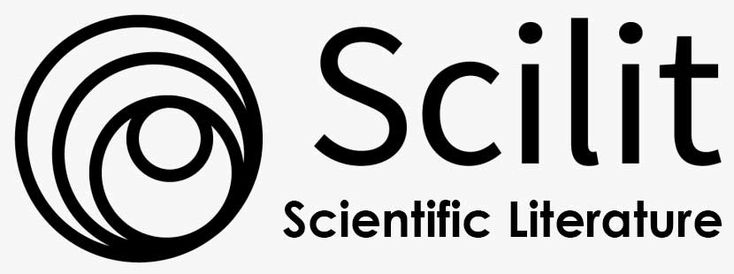توندوتیژی زارەکی و ڕق دەربڕن پەیوەست بە پرسی ژنان لە نێو تۆڕە کۆمەڵایەتییەکان
"کۆمێنتەکانی تۆڕی کۆمەڵایەتی فەیسبووک وەک نموونە"
DOI:
https://doi.org/10.26436/hjuoz.2024.12.3.1370الملخص
ئەم توێژینەوەیە هەوڵێکە بۆ ڕوانین لە توندوتیژی زارەکی و ڕق دەربڕین لە نێو تۆڕە کۆمەڵایەتییەکان پەیوەست بە پرسەکانی ژنان لە هەرێمی کوردستان. ئامانجی ئەم توێژینەوەیە تێگەیشتنە لە چۆنیەتی بەکارهێنانی توندوتیژی زارەکی و ڕق دەربڕین لە نێو بەکارهێنەرانی تۆڕە کۆمەڵایەتییەکان بە دیاریکراوی لە تۆڕی کۆمەڵایەتی فەیسبووک لە هەمبەر پرسەکانی پەیوەست بە ژنان. میتۆدۆلۆژیای بەکارهاتوو بۆ ئەم مەبەستە خۆی لە میتۆدلۆژیای تێکەڵاو دەبینێتەوە، بە جێبەجێکردنی میتۆدۆلۆژیای نێتنۆگرافیا و میتۆدی شیکردنەوەی گوتاری ڕەخنەیی، و شیکردنەوەی ناوەرۆک. وەک نموونە بە شێوەیەکی سەرەکی پێنج پۆستی فەیسبووک وەرگیراون و بۆ هەر پۆستێکیش ١٠٠ کۆمێنت بە شێوەیەکی هەرەمەکی وەک نموونە وەرگیراون لە رێگەی وێبسایتی Export comments. گرنگی ئەم توێژینەوەیە لەوەدا خۆی دەبینێتەوە کە ئەم توێژینەوەیە هەوڵێکی زانستییە بۆ تێگەیشتن لە چۆنیەتی بەکارهێنانی زمانی توند و ڕقاوی لە نێو بەکارهێنەرانی تۆڕی کۆمەڵایەتی فەیسبووک لە بەرامبەر پرسەکانی ژنان. لە ئەنجامدا ئەم تێگەیشتنە بەرجەستەبوو کە بەکارهێنانی توندوتیژی زارەکی و قسەی توند و ڕقاوی بە رێژەیەکی زۆر بەرز لە نێو بەکارهێنەرانی تۆڕی کۆمەڵایەتی فەیسبووک لە بەرامبەر پرسەکانی ژنان هەیە، زیاد لەمە، مەعریفەیەکی زانستی پەیوەست بە تێگەیشتن لە سروشتی بەکارهێننای زمانی توند و پیس و قسەی ڕقاوی لە رێگەی بەکارهێنانی تیۆرییە پەیوەندیدارەکان بەرهەم هێرا.
التنزيلات
المراجع
Agapoglou, T., Mouratoglou, N., Tsioumis, K., & Bikos, K. (2021). Combating Online Hate Speech through Critical Digital Literacy: Reflections from an Emancipatory Action Research with Roma Youths. International Journal of Learning and Development, 11(2), 104120-104120.
Al Ghazali, F. (2007). Critical discourse analysis: How can awareness of CDA influence teaching techniques?. University of Salford Manchester. Available at: http://usir.salford.ac.uk/id/eprint/22590/
Bahador, B. (2021). Countering hate speech. In The Routledge Companion to Media Disinformation and Populism (pp. 507-518). Routledge.
Bahador, B., Kerchner, D., Bacon, L., & Menas, A. (2019). Monitoring hate speech in the US media.
Bimber, B., Flanagin, A. J., and Stohl, C. (2005). Reconceptualizing Collective Action in the Contemporary Media Environment. Communication Theory , 15 (4), 365- 388.
Bryman, A. (2016). Social research methods (Fifth edition.). Oxford University Press.
Coleman, S., and Blumler, J. G. (2009). The Internet and Democratic Citizenship Theory, Practice and Policy. Cambridge: Cambridge University Press.
Creswell, John., W. (2014). Research Design, Qualitative, Quantitative, and Mixed Methods Approaches. 4th edition. Sage publications. London
Culpeper, Jonathan. 2011. Impoliteness Using Language To Cause Offense. Cambridge: Cambridge University Press.
Das, M., Mathew, B., Saha, P., Goyal, P., & Mukherjee, A. (2020). ‘Hate speech in online social media’, SIGWEB newsletter : the newsletter of ACM’s Special Interest Group on Hypertext and Hypermedia, Autumn: 1–8. DOI: 10.1145/3427478.3427482
Dogruer, N., Menevis, I. and EYYAM, R. (2011). "What is the motivation for using Facebook?", Procedia - Social and Behavioural Sciences, vol. 15, pp. 2642-2646.
Faiq, A. M., & Noori, M. S. (2022). Hate Speech Forms and Implications in English and Kurdish Social Media. Journal of University of Human Development, 8(4), 80-88.
Fairclough, N. (1989). Review of Social Semiotics. Sociology, 23(2), 326–328. British Sociological Association Publications Limited.
Fairclough, N. (1992) Discourse and Social Change. Cambridge: Polity Press.
Fairclough, N. (1993). Critical discourse analysis and the marketization of public discourse: The universities. Discourse & society, 4(2), 133-168.
Fairclough, N. (2003). Analysing discourse: textual analysis for social research. London: Routledge
Fairclough, N. (2010). Critical discourse analysis : the critical study of language (2nd ed.). Routledge. London and Newyork.
Ferri, F., Grifoni, P. and GUZZO, T. (2012). "New forms of social and professional digital relationships: the case of Facebook", Social Network Analysis and Mining, vol. 2, no. 2, pp. 121-137.
Fink, C. (2018). Dangerous speech, anti-Muslim violence, and Facebook in Myanmar. Journal of International Affairs, 71(1.5), 43-52.
Fitzpatrick, M. (2008). Stigma. British Journal of General Practice, 58(549), 294–294. https://doi.org/10.3399/bjgp08X280092
Gagliardone Iginio (2015). Mapping and Analysing Hate Speech Online. SSRN Electronic Journal . p:9-10. https://papers.ssrn.com/sol3/papers.cfm?abstract_id=2601792
Goffman E. (1963). Stigma: Notes on the management of spoiled identity. Prentice-Hall, Englewood Cliffs. United States of America.
Green Gill. (2009). The End of Stigma? Changes in the social experience of long-term illness. First Published. Routledge Taylor & Francis Group. London and New York.
Guedes, E., Sancassiani, F., Carta, M. G., Campos, C., Machado, S., King, A. L. S., & Nardi, A. E. (2016). Internet addiction and excessive social networks use: What about Facebook? Clinical Practice and Epidemiology in Mental Health: CP & EMH, 12, 43-48.
Herz, Michael, and Peter Molnar (2012), The Content and Context of Hate Speech: Rethinking Regulation and Responses, Cambridge, New York: Cambridge University Press.
Howard, P. N., and Hussain, M. M. (2013). Democracy’s Fourth Wave? Digital Media and the Arab Spring. New York, USA: Oxford University Press.
Jackman, M. R. (2002). Violence in Social Life. Annual Review of Sociology, 28, 387–415. http://www.jstor.org/stable/3069247
Jay, T. (1992). Cursing in America a psycholinguistic study of dirty language in the courts, in the movies, in the schoolyards and on the streets. Philadelphia: J. Benjamins Pub. Co.
Jay, T. (2009). The Utility and Ubiquity of Taboo Words. Perspectives on Psychological Science, 4(2), 153–161. https://doi.org/10.1111/j.1745-6924.2009.01115.x
Kaplan, A. M., and Haenlein, M. (2010). Users of the world, unite! The challenges and opportunities of Social Media. Bussiness Horizons , 53 (1), 59-68.
Kozinets, R, V., Earley, A., & Dolbec, P.-Y. (2013). Netnographic Analysis: Understanding Culture Through Social Media Data. The SAGE Handbook of Qualitative Data Analysis (pp. 262–276). SAGE Publications, Limited. https://doi.org/10.4135/9781446282243.n18
Kozinets, R. (2017). Netnography: Radical participative understanding for a networked communications society. The SAGE handbook of qualitative research in psychology, 374.
Kozinets, R. V. (2002). The Field behind the Screen: Using Netnography for Marketing Research in Online Communities. Journal of Marketing Research, 39(1), 61–72. http://www.jstor.org/stable/1558584
Kumar Ritesh (2020). Verbal Aggression on Social Media: How, Why And Its Automatic Identification.{Online}. Last accessed 17 September 2022 at: https://www.academia.edu/46610471/VERBAL_AGGRESSION_ON_SOCIAL_MEDIA_HOW_WHY_AND_ITS_AUTOMATIC_IDENTIFICATION
Kusow Adil M. (2015). Stigma. {Online}. Last accessed 23 December 2022 at: https://doi.org/10.1002/9781118663202.wberen316
Machin, D., & Mayr, A. (2012). How to do critical discourse analysis: A Multimodal Introduction. Los Angeles: Sage.
Mertens, Donna. M. (2010). Research and evaluation in education and psychology: Integrating diversity with quantitative, qualitative, and mixed methods. 3rd edition. Sage publications. London.
Mohammad, M. (2020). Social Media and Democratization in Iraqi Kurdistan. Lexington Books.
Nardi, A. E. (2016). Internet addiction and excessive social networks use: What about Facebook? Clinical Practice and Epidemiology in Mental Health: CP & EMH, 12, 43-48.
Paasch-Colberg, S., Strippel, C., Trebbe, J., & Emmer, M. (2021). From insult to hate speech: Mapping offensive language in German user comments on immigration. Media and Communication, 9(1), 171-180.
Snowdon, & Eklund. K, L. (2021). A Critical Discourse Analysis of Representations of Travellers in Public Policies in Ireland. Societies (Basel, Switzerland), 11(1), 14–. https://doi.org/10.3390/soc11010014
Steinmetz, S.K., (1999). Sociological theories of violence. In Handbook of Psychological Approaches with Violent Offenders (pp. 13-38). Springer, Boston, MA.
Stemler, Steve (2001) "An overview of content analysis," Practical Assessment, Research, and Evaluation: Vol. 7, Article 17. DOI: https://doi.org/10.7275/z6fm-2e34
Sternberg, R. J. (2003). A duplex theory of hate: Development and application to terrorism, massacres, and genocide. Review of General Psychology, 7(3), 299–328.
Sternberg, R. J. & Sternberg, K. (2008). The nature of Hate. 1st published. Cambridge university press. Cambridge. UK.
Tannen, D., Hamilton, H. E., & Schiffrin, D. (2015). The handbook of discourse analysis (Vol. 1). John Wiley & Sons, Inc.
Tontodimamma, A., Nissi, E., Sarra, A., & Fontanella, L. (2020). Thirty years of research into hate speech: topics of interest and their evolution. Scientometrics, 126(1), 157–179. https://doi.org/10.1007/s11192-020-03737-6
Tuckness Alex (2005). Locke’s political philosophy. {online}. Last accessed 17 December 2021 at: https://plato.stanford.edu/entries/locke-political/
United Nations (2020). United Nations Strategy and Plan of Action on Hate Speech{Online} Last accessed 02.02.2022 at:https://www.un.org/en/genocideprevention/documents/UN%20Strategy%20and%20PoA%20on%20Hate%20Speech_Guidance%20on%20Addressing%20in%20field.pdf
United Nations (2023). International Women's Day
March. {Online}. Last accessed 22 June 2023 at: https://www.un.org/en/observances/womens-day/background#:~:text=International%20Women%27s%20Day%20is%20celebrated,%2C%20cultural%2C%20economic%20or%20political.
van Dijk, T. A. (1997). What is political discourse analysis? Political linguistics, ed. By Jan Blommaert and Chris Bulcean, 11–52. Amsterdam: John Benjamins.
Walby, S. (2013) ‘Violence and society: Introduction to an emerging field of sociology’, Current Sociology, 61(2), pp. 95–111. Doi: 10.1177/0011392112456478.
Waluati Triana, H., Sastra, G., & Reflinaldi. (2019). ‘Social Practice In Facebook: Critical Discourse Analysis In The Process of Text Production’. Proceeding of The 4th International Seminar on Linguistics (ISOL-4), pp. 105–10. Sciendo: Warsaw, Poland. DOI: 10.2478/9783110680027-015
Waseem Zeerak, Thomas Davidson, Dana Warmsley, And Ingmar Weber. (2017). Understanding Abuse: A Typology of Abusive Language Detection Subtasks. In Proceedings of The First Workshop on Abusive Language Online. Association For Computational Linguistics. Pages 78–84.
منشور
كيفية الاقتباس
إصدار
القسم
الرخصة
الحقوق الفكرية (c) 2024 Ribar J. Mahmood, Murad H. Mohammed

هذا العمل مرخص بموجب Creative Commons Attribution-NonCommercial-ShareAlike 4.0 International License.
يوافق المؤلفين الذين ينشرون في هذه المجلة على المصطلحات التالية
[CC BY-NC-SA 4.0] يحتفظ المؤلفون بحقوق الطبع والنشر ومنح حق المجلة في النشر الأول مع العمل المرخص له بموجب ترخيص مشاع المبدع للإسناد
الذي يسمح للآخرين بمشاركة العمل مع الإقرار بحقوق التأليف والنشر الأولي في هذا مجلة
مكن للمؤلفين الدخول في ترتيبات إضافية منفصلة للتوزيع غير الحصري للنسخة المنشورة من المجلة، مع الإقرار بإصدارها الأولي في هذه المجلة
يسمح ويشجع المؤلفين على نشر عملهم عبر الإنترنت

















